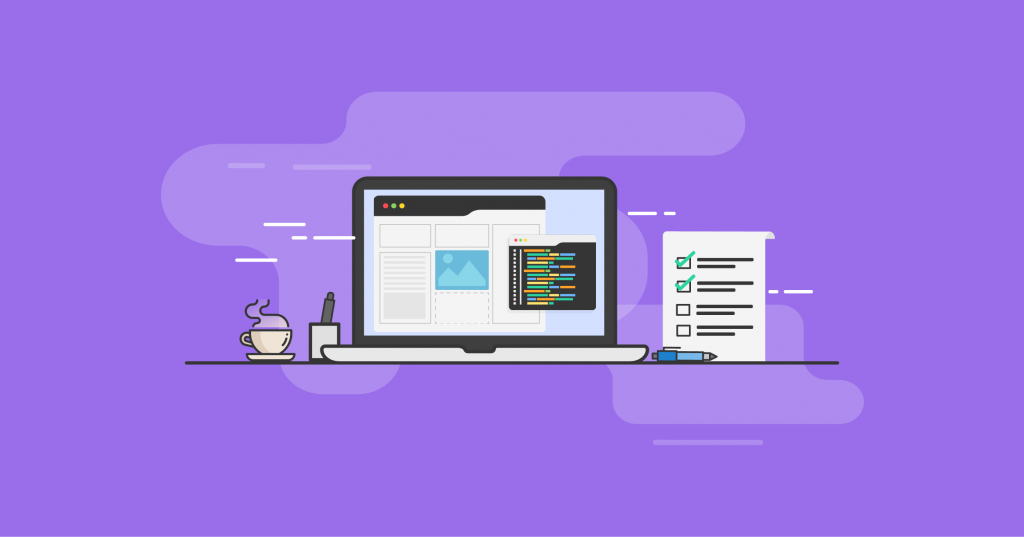How Responsive Internet Design Impacts User Experience Across Gadgets
Receptive internet layout plays a critical role in forming individual experience across a wide range of devices, as it allows websites to fluidly adjust to differing display dimensions and resolutions. Comprehending these interconnected components elevates essential inquiries regarding how services can leverage receptive layout to enhance user involvement and fulfillment.

Relevance of Responsive Style
As customers increasingly accessibility internet sites on a range of devices, the relevance of responsive layout becomes vital. Responsive design ensures that an internet site's format and web content adapt effortlessly to various display dimensions, orientations, and resolutions (Web design in Penang). This adaptability is critical in today's digital landscape, where individuals involve with web content on smartphones, tablets, laptop computers, and desktops
The importance of receptive design prolongs beyond plain visual appeals; it boosts use and ease of access, supplying customers with a regular experience no matter the tool utilized. A well-implemented receptive style reduces the requirement for individuals to zoom or scroll excessively, streamlining navigation and boosting total contentment.
In addition, responsive design is vital for search engine optimization (SEO) Look engines, such as Google, focus on mobile-friendly web sites, indicating that a responsive site is more probable to place higher in search results page - Web design in Penang. This not just boosts exposure but additionally drives web traffic and interaction
Benefits for Mobile Users
Mobile customers experience unique advantages when connecting with responsive websites. Largely, these websites are developed to adjust effortlessly to various display sizes and orientations, making certain an ideal viewing experience despite the gadget in use. This flexibility enhances use, enabling customers to navigate via material easily without the requirement for too much scrolling or zooming.
Furthermore, receptive style removes the stress of coming across non-optimized websites that may bring about distorted formats or missing capabilities on smart phones. Customers gain from a constant interface, which cultivates experience and reduces cognitive lots, allowing them to focus on their jobs as opposed to having a hard time with navigating.
Furthermore, receptive internet sites improve access by incorporating touch-friendly aspects, such as bigger buttons and streamlined food selections, which provide especially to mobile communications. This attentiveness to mobile user experience not just boosts user fulfillment however likewise motivates longer involvement, as site visitors are more probable to remain on a website that is simple to make use of.
Ultimately, the advantages of receptive internet design for mobile individuals add to a more pleasurable and reliable browsing experience, reinforcing the relevance of adopting this method in today's multi-device landscape.
Influence On Loading Speed
The impact of responsive website design on packing speed is a critical factor in enhancing user experience throughout tools. With the raising dependence on mobile tools for net accessibility, customers anticipate internet sites to fill promptly, no matter of the more helpful hints system being utilized. Responsive web design optimizes photos and web content for numerous display sizes, guaranteeing that only the necessary elements are filled based upon the gadget's capabilities. This approach significantly lowers the quantity of information transferred, ultimately improving filling times.
Additionally, receptive layout techniques often include utilizing versatile grids and layouts, which adapt to different display resolutions. This adaptability decreases the demand for excessive resizing or refilling of pages, further improving rate. Search engines like Google focus on fast-loading web sites in their positions, making responsive style not only a see here now user-centric choice however additionally a critical component for search engine optimization.
However, it is important to note that inadequate application of receptive design can result in puffed up code and unneeded components that may impede loading rate. For that reason, mindful preparation and implementation are vital to fully leverage the advantages of responsive website design in optimizing loading rate and, consequently, customer experience throughout all devices.
Improved Navigation Experience
Just how can receptive website design change the navigation experience for customers? Receptive web design improves navigating by making sure that menus, switches, and links adapt seamlessly to different display sizes and orientations. This flexibility is vital as users increasingly gain access to web sites from a varied variety of devices, ranging from smartphones to tablets and desktop computer computer systems.
Responsive styles prioritize user-centric navigating by simplifying access to vital content. Burger menus, which are compact and expanding, allow for efficient usage of space on smaller displays, lessening clutter while maintaining convenience of gain access to. This structured method not only help in usability but likewise boosts overall engagement, as individuals can rapidly locate info without unnecessary scrolling or searching.

SEO Advantages of Responsiveness
Responsive website design supplies significant SEO advantages that can improve a site's exposure and position in internet search engine outcomes. One of the key benefits is the combination of URLs. A responsive website uses a solitary link for both desktop and mobile versions, which simplifies the indexing procedure for search engines. This stays clear of potential replicate content issues that can occur from keeping different Links for different tools.
Additionally, Google prioritizes mobile-friendly websites in its rankings, making responsiveness a critical factor in seo approaches. The mobile-first indexing technique embraced by Google means that the mobile version of a site is thought about the main variation, further highlighting the value of a responsive design.
Boosted user experience, a natural result of receptive layout, additionally adds to SEO efficiency. When customers find it easier to browse a web site, they have a tendency to remain longer and involve more, which can lower bounce prices and signal to online search engine that the web content is appropriate and valuable.
Conclusion
In conclusion, receptive internet layout plays a critical role in boosting individual experience throughout different tools. The advantages expand beyond individual satisfaction, as a responsive style likewise adds favorably to look engine optimization initiatives.